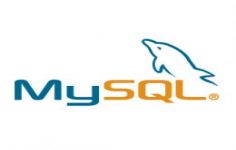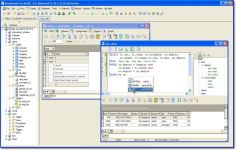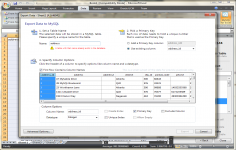 MySQL 5.1.73
MySQL 5.1.73
MySQL AB - (Open Source)
MySQL is a successful open source database used in most web applications, e-commerce and online transaction processing.
MySQL is one of the world's most famous and used open source database. The software can be used to manage web applications, e-commerce and online transaction processing since MySQL database incorporates support those transactions. It is also commonly associated with PHP when it comes to managing websites.
With standard JDBC , ODBC, and Net, the developer can choose the programming language. MySQL has the advantage of working with almost all the popular operating systems and communicate easily with programming languages ​​such as C, C + +, VB, C #, PHP, Python, Ruby, Java, Perl, Eiffel, etc.MySQL replication allows you to create profitable applications. In addition, it enables the development of typologies replication complex and massive chain.Its reliability and robustness, performance, ease of use makes MySQL have more success than anticipated.
- Title:
- MySQL 5.1.73
- File Size:
- 38.8 MB
- Requirements:
- Windows 9x / 2000 / XP / Vista / Windows7 / Windows8
- Language:
- en-us
- License:
- Open Source
- Date Added:
- 02 Dec 2013
- Publisher:
- MySQL AB
- Homepage:
- http://www.mysql.com
- MD5 Checksum:
- 6383F51F0871D11AF27EF992DB2D4F00
# Bugs Fixed
* InnoDB: In debug builds, test case failures would occur due to ibuf_contract_ext performing merges and dict_stats_update returning evicted pages back into the buffer pool while ibuf_change_buffering_debug is enabled.
* InnoDB: InnoDB would fail to return an error when attempting to run a query after discarding the tablespace.
* InnoDB: When the change buffer is enabled, InnoDB would fail to write a transaction log record when merging a record from the insert buffer to a secondary index page if the insert was performed as an “update-in-place”.
* Partitioning: The storage engine was set incorrectly during a rebuild of a partition; the table storage engine was ignored and the default storage engine used instead. Thus, in MySQL 5.1, it was possible for REBUILD PARTITION to change the partition storage engine from InnoDB to MyISAM, and for the reverse (rebuilding partitions of MyISAM tables causing the partitions to use InnoDB) to occurin MySQL 5.5 and later. Now, when rebuilding partitions, the storage engine actually used by the table is checked and used by the handler for the rebuild operation, so that the partition storage engine is not inadvertently changed.
* Replication: When an error encountered by the dump thread while reading events from the active binary log file was a temporary error, so that the dump thread tried to read the event, it was possible for the dump thread to seek the wrong position, which could cause one or more events to be resent. To prevent this, the thread's position is obtained after each correct read of an event.
* Replication: The value of LAST_INSERT_ID() was not correctly replicated when filtering rules were used on the slave.
* Enabling Index Merge optimizer switches and setting a small sort_buffer_size value could lead to a server exit.
* The mysql_options() C API function could leak memory if called more than once with the MYSQL_SET_CLIENT_IP option.
* An error array in the SSL code was missing a comma, leading to implicit concatenation of adjacent messages and a resulting off-by-one error in the relationship between error numbers and messages.
* The filesort implementation sometimes failed to allocate enough buffer space, leading to a server exit.
* Very long database names in queries could cause the server to exit.
* The my_b_vprintf() function could produce incorrect results for long integers on 64-bit systems.
* Host names in grant tables are stored in lowercase, but mysql_install_db could fail to observe this convention, leading to accounts that could not be dropped with DROP USER.
Related software
2.1/5 from 178 users


